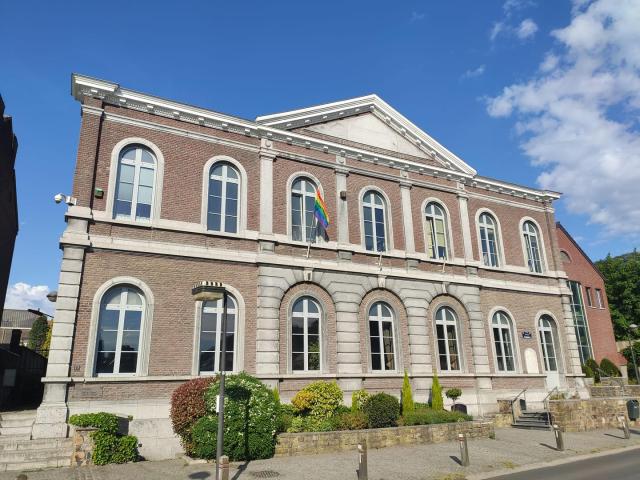The must-sees
Heritage, unusual, sporty, fun: if you had to do just one activity in this locality, you’ll find it in these suggestions.
 Engis Pont
Engis PontHeritage, unusual, sporty, fun: if you had to do just one activity in this locality, you’ll find it in these suggestions.
 Chateau Hermalle7
Chateau Hermalle7 Maison Communale Engis
Maison Communale Engis Ferme Hottine Hermalle
Ferme Hottine HermalleA significant prehistoric presence is attested as early as the Palaeolithic era in the local caves. In Merovingian times, the Thier d’Olne site, on a hill overlooking the Meuse between Hermalle and the vicus of Ombret, was occupied by an aristocratic residence. A mausoleum, then a chapel and a Carolingian church with associated tombs, also shed light on the site’s history from the 7th to the early 11th century. This early medieval settlement is unique in Belgium.
The village of Clermont, well situated on the Meuse in a forest landscape, was the seat of a county whose castle was unfortunately destroyed during quarrying. The seigneury was acquired late in life, around 1346, by the bishops of Liège, who integrated it into the episcopal mense. Engis, mentioned as early as 1040, belonged to the de Warfusée family in the 12the century, then to the de Horion and de Haultepenne families.
Hermalle belonged to the feudal court of Liège in the Middle Ages. Its castle, dating from the early 12thcentury, was destroyed by the Hutois. From the 14th century, alum was mined in Engis. Quarries and brickworks were also opened in the 19the century. But it was for the extraction and preparation of lead, zinc and pyrite that the “Nouvelle Montagne” company was established in the 19the century. It later merged with the Prayon-Trooz metallurgical company.
The two rural villages, Clermont and Hermalle, made their living partly from agriculture, but also from industry and forestry. In Clermont, gunpowder was manufactured and potters’ workshops and quarries were opened.
.
Looking for accommodation, wanting to discover the expertise of our chefs,
looking for your next outing, needing to get some fresh air…
we’ve selected the essentials of the commune for you.